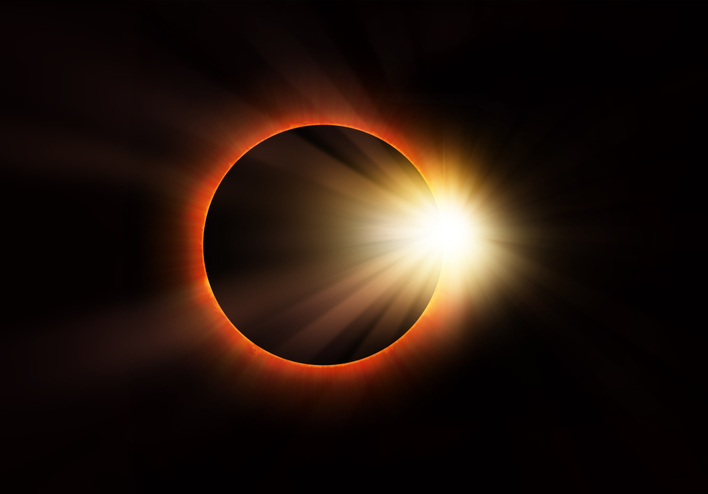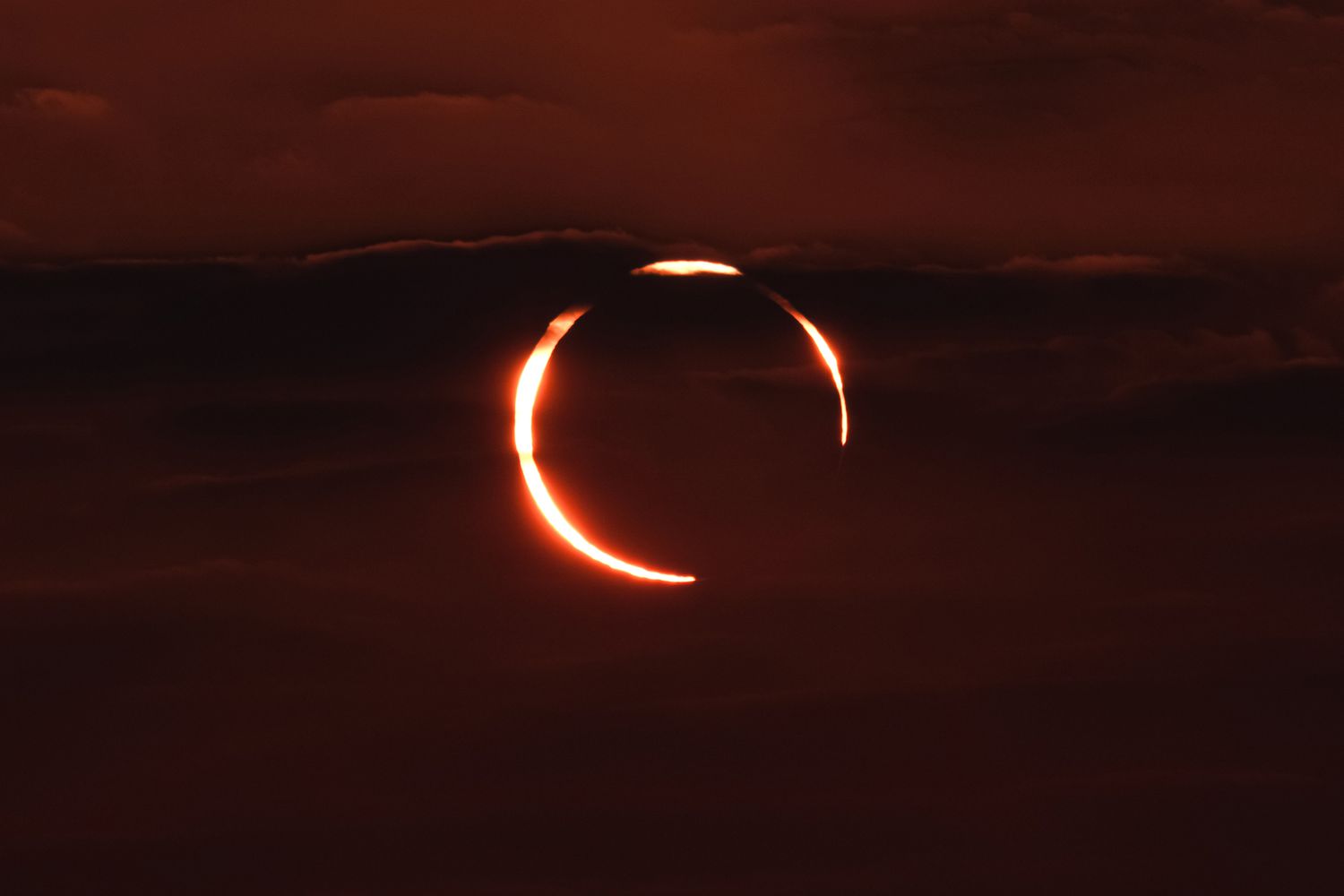Ring of Fire: A Guide to the 2023 Annular Solar Eclipse Over North America

The annular solar eclipse on October 14, 2023, is a captivating astronomical event where the moon will cover the sun's center, leaving a "ring of fire" visible in the sky. This occurs because the moon is at a point in its elliptical orbit where it appears smaller than the sun from our perspective on Earth. The eclipse's path of annularity, the region where viewers can see the complete ring, spans from Oregon to Texas, covering eight U.S. states. Beyond this, a partial eclipse will be visible over a broader area extending through North, Central, and South America.
This event is not only a visual spectacle but also a precursor to the 2024 total solar eclipse, offering a unique viewing experience to astronomy enthusiasts. For safe viewing, it's crucial to use solar eclipse glasses or solar filters to protect your eyes. The next annular solar eclipse after this event will occur on October 2, 2024, offering another chance for those who miss this one to witness a "ring of fire" eclipse.
What Is An Annular Solar Eclipse?
An annular solar eclipse is a majestic celestial event that happens when the moon positions itself directly between the Earth and the sun, but unlike a total solar eclipse, it doesn't entirely cover the sun's disk due to its apparent smaller size. The term "annular" derives from the Latin word "annulus," which means ring. This nomenclature vividly describes the ring-like appearance of the sun as the moon traverses its face.


The mechanics behind this phenomenon are deeply rooted in the elliptical nature of the moon's orbit around the Earth. The moon’s orbit is not a perfect circle, but an ellipse, with points of apogee (farthest from Earth) and perigee (closest to Earth). When an eclipse occurs around the time the moon is near its apogee, the moon appears smaller in the sky compared to the sun's disk. Consequently, as the moon glides across the sun, it leaves an observable bright ring known as the "ring of fire." This ring is the sun’s outer disk that the moon is unable to cover due to its smaller apparent diameter.
The contrast between an annular and total solar eclipse is pronounced. During a total solar eclipse, the moon is close enough to Earth, and its apparent size is large enough to entirely cloak the sun, plunging daylight into temporary darkness and revealing the ethereal solar corona. Conversely, an annular solar eclipse doesn’t offer the dramatic transition from day to night, nor the sight of the sun's corona. Instead, it delivers a surreal and picturesque “ring of fire” which is the sun's photosphere surrounding the dark disk of the moon.
When & Where Is It Visible?
The upcoming annular solar eclipse on October 14, 2023, promises a sky-gazing event full of wonder and is primed to draw gazes upward from Oregon to Texas. The path of annularity, which is the region where the mesmerizing "ring of fire" will be fully visible, spans a breadth of 118 to 137 miles. This path doesn’t just stop at Texas; it continues its celestial journey through various territories in North, Central, and South America, painting a ring of sunlight across the sky as it goes. The timing of this eclipse varies based on location, kicking off at 9:15 a.m. PDT in Oregon, and making its curtain call at 11:56 a.m. CDT in Texas. Each region within the path of annularity will have its unique moment under the eclipse, a fleeting but awe-inspiring spectacle of the sun and moon's cosmic dance.
Viewing Locations

The U.S. Southwest is a prime ticket to the show, boasting several locations that offer not only a clear view of the eclipse but a breathtaking natural backdrop to this celestial event.
Notable mentions include Oregon Dunes, Crater Lake National Park in Oregon, and Bryce Canyon National Park in Utah among others. Regardless of the viewing spot, it’s paramount to keep an eye on the local weather forecasts leading up to the event. Clear skies are the crucial ingredient for an unobstructed, memorable viewing experience. Preparing ahead, keeping alternative viewing locations in mind, and being ready to relocate will ensure that cloud cover doesn’t eclipse your experience of the annular solar eclipse. Each selected viewing location under clear skies promises a unique tableau, with the "ring of fire" eclipse as the celestial centerpiece set against the diverse landscapes of the Americas.
The annular solar eclipse is a profound reminder of the meticulous choreography of celestial bodies and the grandeur of astronomical events. It not only provides a visually stunning spectacle but also a practical demonstration of the fundamental principles of astronomy and celestial mechanics. Through understanding the science behind the annular solar eclipse, one can truly appreciate the exquisite and precise nature of our universe.
Viewing Safety
Safety is paramount when watching a solar eclipse, as the sun's rays can cause severe eye damage if viewed directly. It's vital to use solar filters or solar eclipse glasses, which are specifically designed to protect your eyes from harmful radiation. These specialized glasses meet the ISO 12312-2 international standard, ensuring they block out 99.999% of the sun's intense light. Unlike regular sunglasses, solar eclipse glasses allow you to safely enjoy the celestial event without risking your vision. It's advisable to inspect these protective glasses for any damage before the event to ensure they provide adequate protection.
The Next Annular Solar Eclipse
As the ring of fire fades away, sky-gazers can start setting their sights on the next rendezvous of the sun and moon on October 2, 2024. Every eclipse carries the ancient rhythm of celestial mechanics, a rhythm that has been punctuating the vast silence of space long before humanity turned its eyes to the skies.
While the U.S. will have to wait for its next chance to witness an annular eclipse, the anticipation for the total solar eclipse of 2024 will likely build, promising another chance for people to come together under the shared sky. The ebb and flow of celestial events continue, each one a reminder of the grand cosmic ballet in which Earth partakes, and the boundless curiosity that propels us to look upward, wonder, and explore the narrative written across the sky.
